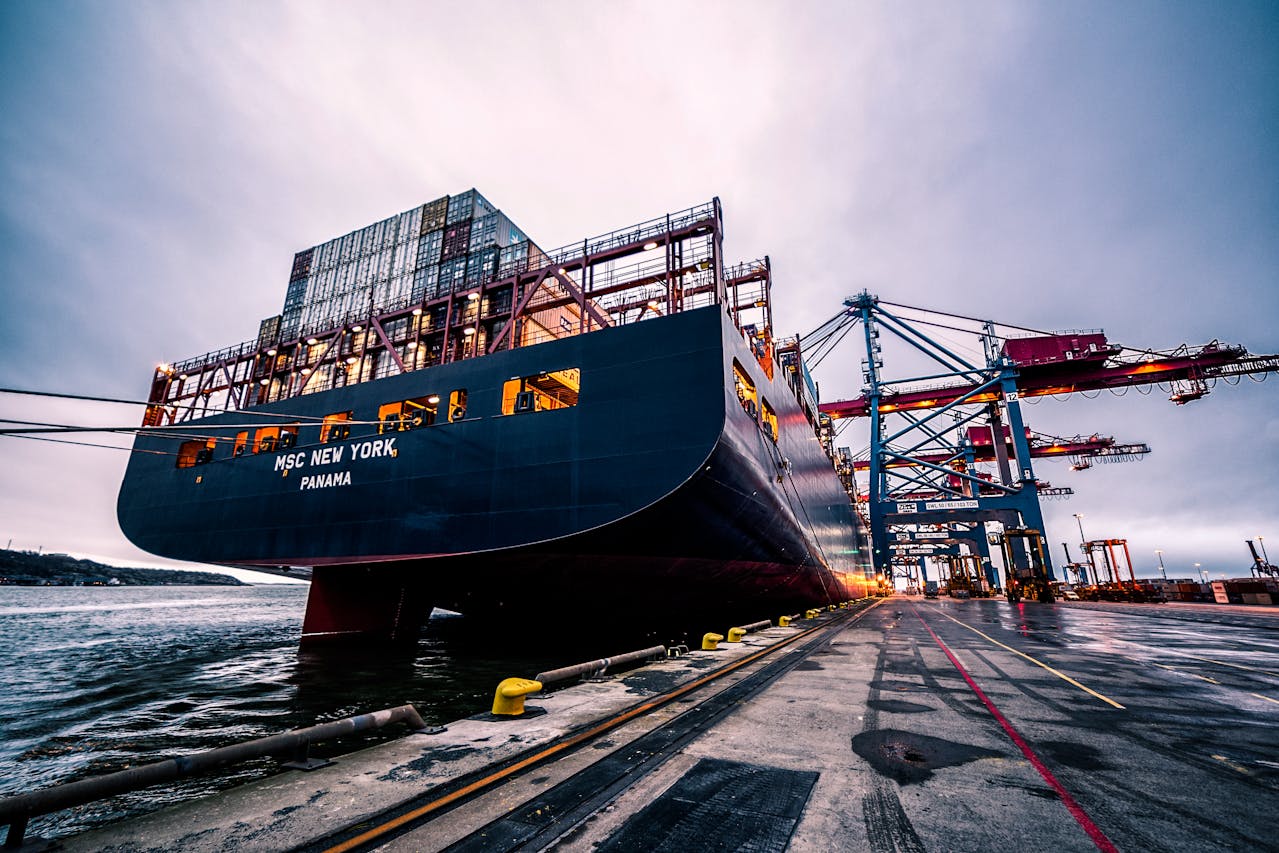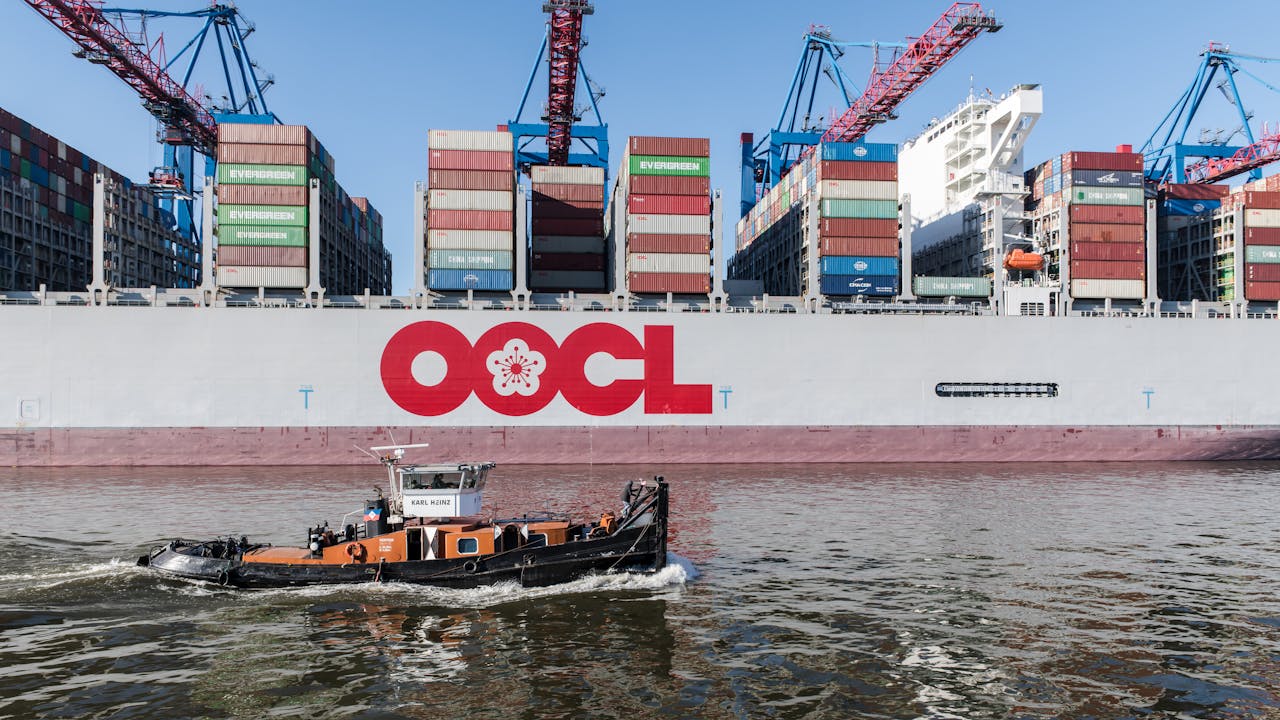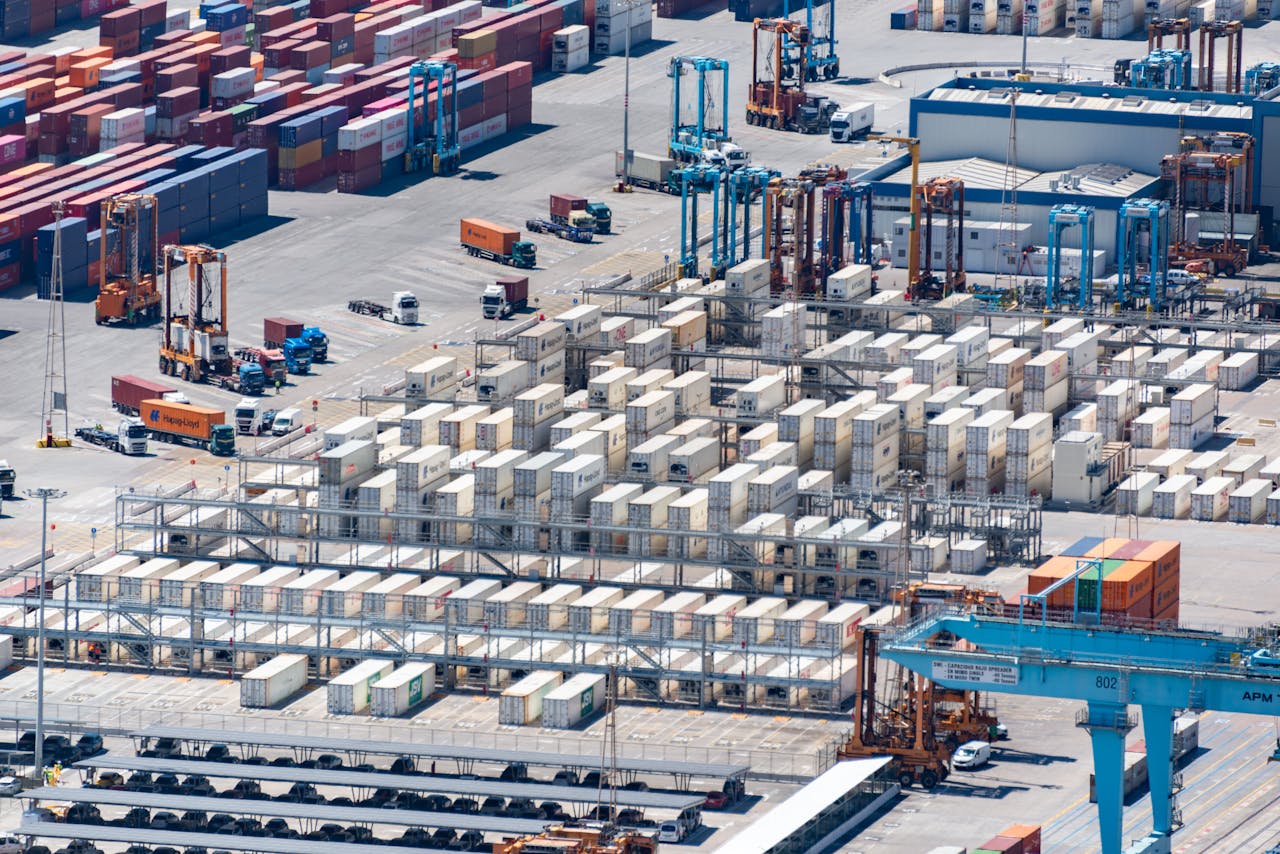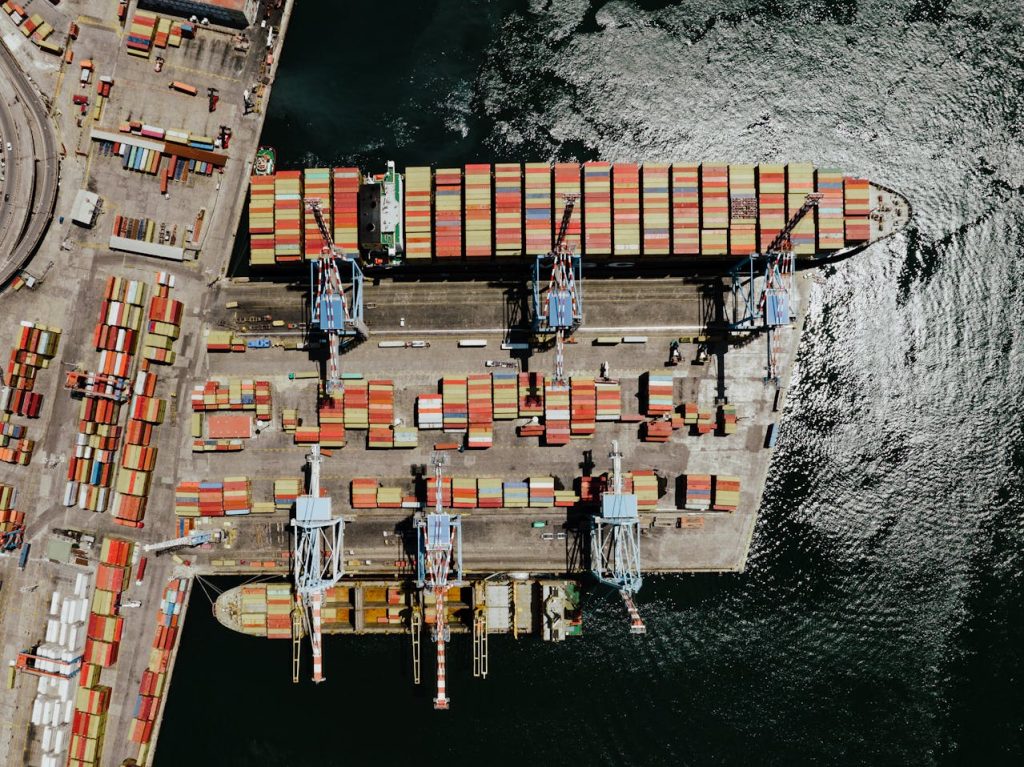Ports and terminals serve as the backbone of global trade, handling millions of tonnes of cargo annually. Their role in connecting supply chains makes robust security measures non-negotiable. From hazardous materials to heavy machinery, the risks are as diverse as the goods transported. Addressing these challenges requires a holistic approach, blending technology, training, and stringent protocols.
Modern terminals face unique pressures, including tight schedules and complex logistics. A single oversight can disrupt entire operations, risking both personnel and goods. Solutions like technology-driven strategies help minimise human error, offering real-time visibility across workflows. For instance, terminal operating systems (TOS) are revolutionising how ports manage safety, with the smart ports market projected to reach £12.3 billion by 2032.
Drawing insights from GardaWorld Security and global trade research, we’ll explore proven methods to maintain safety without compromising efficiency. Whether it’s handling volatile cargo or optimising traffic flow, the right protocols ensure smooth, secure operations. Let’s dive into the strategies that keep these critical hubs running safely.
Key Takeaways
- Ports and terminals are vital to global trade, requiring rigorous security measures to manage risks.
- Handling hazardous cargo demands specialised protocols to protect workers and goods.
- Technology, such as terminal operating systems, reduces errors and enhances real-time monitoring.
- Effective safety practices maintain operational continuity and minimise disruptions.
- Industry data highlights a growing shift towards smart solutions for future-proofing port infrastructure.

Understanding Port and Terminal Safety Challenges
Global logistics hubs face evolving threats, from cyberattacks to cargo tampering. Physical infrastructure like cranes and storage yards requires constant vigilance, while operational gaps in handling procedures expose workers to preventable risks. Balancing speed with management precision remains a core challenge, especially as international trade volumes surge.
Critical Infrastructure and Cargo Security Risks
Ageing docks and outdated equipment heighten accident probabilities. For example, corrosion in container lifts can lead to mechanical failures. Proper training reduces these risks, studies show ports with certified staff report 37% fewer incidents. Real-time tracking systems also help monitor sensitive shipments, from chemicals to pharmaceuticals.
Unique Challenges Across Diverse Terminals
A bustling container port faces different hurdles than a liquid natural gas terminal. High-traffic hubs struggle with congestion, increasing collision risks. Smaller facilities often lack resources for advanced equipment, relying on manual checks. Custom protocols are essential, thermal imaging works for fuel depots, while RFID tags suit retail cargo.
Implementing Robust Security Protocols at Ports
Collaboration sits at the heart of modern port security. By aligning strategies with Transport Canada’s regulations and GardaWorld’s expertise, facilities create layered defences against emerging threats. Central to this is planning that balances operational speed with meticulous oversight.
Co-ordination with Port Authorities and Government
Joint initiatives, like shared surveillance networks, amplify situational awareness. For example, Vancouver’s port reduced smuggling incidents by 22% after integrating federal data streams. Regular drills with local agencies also sharpen responsiveness to crises, from chemical spills to cyber breaches.
Measures for Hazardous Cargo Handling and Equipment Safety
Handling volatile materials demands airtight protocols. Facilities storing LNG or explosives use vibration sensors and pressure monitors to detect anomalies. Compliance isn’t optional, equipment inspections follow strict schedules, with digital logs ensuring accountability. Training programmes, aligned with safety and cybersecurity frameworks, reduce human error during high-risk tasks.
Real-time tracking systems are game-changers. One European terminal cut cargo damage claims by 40% using IoT-enabled humidity controls. Such solutions boost efficiency while prioritising worker safety. Continuous audits and tech upgrades keep protocols ahead of evolving risk factors, proving that proactive planning pays dividends.

How to Ensure Safety in Port and Terminal Operations
Compliance frameworks form the backbone of secure maritime work environments. Aligning with industry standards from bodies like Transport Canada ensures seamless flow of goods while prioritising safety. These regulations aren’t just checkboxes, they’re lifelines for workers and ships navigating complex port ecosystems.
Adhering to Compliance and Safety Regulations
Efficient work practices thrive when paired with clear guidelines. For example, cargo handling protocols reduce bottlenecks in logistics chains, ensuring timely deliveries. Regular audits identify gaps in equipment maintenance or staff training, fostering proactive risk management.
A safe environment starts with transparency. Ports that document incident reports and share data with regulators see 29% fewer accidents annually. This collaborative approach extends to vessel traffic systems, which prevent collisions between ships during peak operations.
Robust logistics processes also play a role. Digitised checklists streamline inspections, while real-time monitoring tools maintain cargo flow integrity. By embedding compliance into daily routines, facilities create resilient industry ecosystems where safety and efficiency coexist.
Leveraging Advanced Technology for Port Efficiency
Modern maritime hubs are embracing cutting-edge innovations to tackle operational complexities head-on. From IoT sensors to automated cranes, these tools transform how terminal operations manage speed, accuracy, and safety. The result? Smoother workflows and fewer bottlenecks across bustling logistics networks.
Integration of IoT, Data, and Automation Systems
Smart sensors now track container movements in real time, flagging delays during loading unloading cycles. Automated straddle carriers, for instance, optimise yard space by stacking boxes with millimetre precision. One Asian port reported a 30% boost in cargo handling capacity after deploying AI-driven cranes.
Data analytics platforms also predict equipment maintenance needs. This prevents breakdowns in handling equipment, reducing downtime. Intermodal terminals use RFID tags to sync rail and truck schedules, slashing idle times by half.
Digital Tools for Real-Time Security and Operational Insights
Centralised dashboards give teams instant visibility into terminal operations. Thermal cameras detect overheating machinery, while vibration monitors alert staff to unstable container stacks. Such tools help ports act before minor issues escalate.
Cloud-based systems also streamline documentation for cargo handling. Digital bills of lading cut processing times from days to hours. As one European intermodal terminal proved, integrating these solutions isn’t just about efficiency, it’s about building resilient, future-ready infrastructure.

Investing in Training and Skill Development for Our Workforce
Behind every efficient port lies a team of skilled workers equipped to handle modern challenges. We prioritise continuous learning to keep pace with evolving systems and emerging risks. Tailored programmes bridge gaps between traditional practices and cutting-edge automation, creating safer environments for handling delicate goods.
Specialised Maritime and Safety Training Programmes
Custom courses address unique scenarios, from managing refrigerated containers to coordinating rail transfers. Rotterdam’s Port Authority, for example, reduced crane-related incidents by 18% after introducing VR simulations for equipment operators. These immersive tools help workers master complex tasks in risk-free settings.
Certifications in hazardous material handling are equally vital. Regular drills ensure teams respond swiftly to spills or fires. Such preparation prevents delays while protecting both personnel and goods.
Regular Proficiency Assessments and Compliance Updates
Quarterly evaluations maintain high standards across all roles. Digital learning systems track progress, flagging areas needing improvement. Singapore’s PSA International uses adaptive quizzes that adjust difficulty based on real-time performance data.
We integrate automation training into refresher courses. Staff learn to operate smart cranes and IoT-enabled container trackers. This dual focus—human expertise and tech fluency, keeps operations aligned with global safety benchmarks.
By investing in our people, we build resilient ports where workers, systems, and goods move seamlessly. It’s not just about skills, it’s about fostering a culture where safety and efficiency thrive together.
Optimising Risk Management and Incident Prevention
Staying ahead of potential hazards requires equal parts foresight and action. We focus on technologies that transform reactive protocols into predictive safeguards. Industry insights reveal facilities adopting this mindset reduce incident rates by up to 45% within two years.
Implementing Proactive Risk Mitigation Measures
Operators now use predictive analytics to identify high-risk areas before issues arise. For example, Singapore’s port employs vibration sensors on cranes to detect mechanical stress during loading. This approach prevents equipment failures that could trigger chain-reaction accidents.
Regular risk mapping sessions help teams prioritise upgrades. Thermal imaging scans in fuel storage zones and pressure monitors for chemical tanks are becoming standard. These technologies create layered defences against both operational and environmental threats.
Continuous Monitoring and Emergency Preparedness
Real-time data streams keep operators informed 24/7. IoT-enabled container seals alert teams to unauthorised access in sensitive areas. One US terminal reduced cargo tampering cases by 33% after implementing this technology.
Emergency drills are no longer optional. We conduct quarterly simulations for scenarios like crane collapses or hazardous spills. Rotterdam’s port authority credits such preparations with cutting incident response times by 19% last year.
Our playbook includes:
- Automated alerts for irregular loading patterns
- AI-powered CCTV analysing worker movements near danger zones
- Blockchain systems tracking maintenance histories across technologies
By marrying innovation with vigilance, we’re redefining what proactive risk management means for modern maritime hubs.
Conclusion
Securing global supply chains demands more than isolated measures, it requires interconnected solutions. Our exploration highlights technology as the linchpin, blending real-time visibility with predictive analytics to manage marine traffic and vehicles efficiently. When every second counts, smart sensors and centralised dashboards prevent bottlenecks while protecting both people and cargo.
Customer expectations now drive innovation across terminal workflows. Transparent tracking systems build trust, while automated alerts keep shipments moving securely. Collaboration remains vital, shared data streams between ports, regulators, and logistics partners create resilient networks that adapt to emerging risks.
We remain committed to evolving alongside this dynamic sector. Regular skills assessments ensure teams master new tools, from AI-powered cranes to blockchain audits. By prioritising both customer needs and frontline safety, modern ports can thrive as hubs of efficiency and reliability.
The future belongs to those who invest wisely. As GardaWorld’s research confirms, integrating advanced technology with human expertise isn’t optional—it’s how we’ll keep global trade flowing safely for generations.



